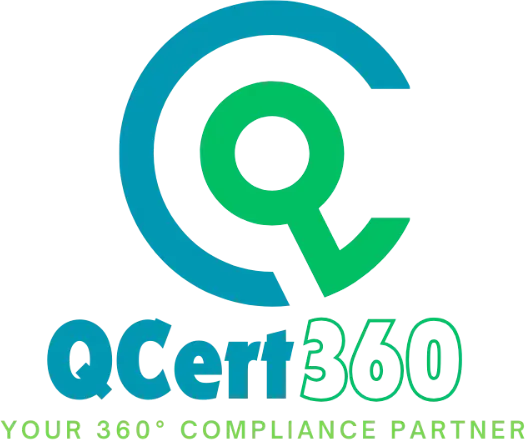
When organizations think about efficiency, cost control, and employee well-being, facilities management often sits at the heart of the conversation. Yet, without a structured system, facilities management can feel reactive instead of strategic. That’s where ISO 41001 certification for facilities management systems comes in.
This international standard helps organizations create a framework for managing facilities in a way that aligns with business goals, sustainability, and employee needs. But implementing it is not always straightforward. Many companies struggle to figure out the right approach, balance costs, and navigate compliance. Let’s break down how to implement ISO 41001 effectively, the best practices that drive success, and the common challenges organizations encounter along the way.
Why ISO 41001 Certification Matters
ISO 41001 isn’t just about maintaining buildings—it’s about integrating facilities management into the organization’s strategic direction. Businesses that pursue ISO facilities management certification gain credibility in global markets, improve operational efficiency, and create safer, healthier work environments.
For multinational companies, adopting international standards for facilities management is often a requirement in tendering processes, especially in Europe and the Middle East. Buyers increasingly expect documented evidence that suppliers manage their facilities responsibly, sustainably, and in line with global best practices.
What this really means is that ISO 41001 is no longer a “nice-to-have.” It has become a compliance requirement for facility managers who want to demonstrate accountability and meet client expectations.
Best Practices for Implementing ISO 41001
- Start with a Gap Analysis
Before making any changes, organizations should run a structured gap analysis. This involves comparing current facilities management practices with the requirements of ISO 41001. The goal is to identify strengths, weaknesses, and areas needing improvement. Many companies choose to partner with ISO 41001 consulting services to get an unbiased review and practical roadmap.
- Secure Leadership Buy-In
Implementation can stall quickly without leadership support. Senior management needs to understand not only the compliance benefits but also the operational and financial advantages. Position ISO 41001 as a tool for improving productivity, reducing energy costs, and ensuring long-term asset value.
- Define Clear Objectives
Facilities management affects everything from air quality and energy efficiency to employee satisfaction. Successful organizations set clear objectives such as reducing downtime, improving space utilization, or achieving sustainability targets. These objectives become measurable outcomes within the management system.
- Train Teams at All Levels
Facilities management touches every department. Training should not be limited to facility managers. Employees need awareness of how their daily activities—from waste segregation to energy use—affect the larger system. This is where ISO 41001 training and awareness programs make a difference.
- Integrate with Other ISO Standards
Many organizations already hold certifications such as ISO 9001 (quality), ISO 14001 (environment), or ISO 45001 (health and safety). Instead of treating ISO 41001 as a standalone framework, integrate it into existing systems. This makes audits easier, reduces duplication, and ensures consistent reporting.
- Leverage Digital Tools
Modern facilities management thrives on data. Using building management systems, IoT sensors, and workplace analytics can help organizations gather insights that align with ISO 41001 requirements. Digital dashboards also make compliance reporting much smoother.
- Audit and Review Regularly
Don’t wait until the certification audit to evaluate performance. Internal audits and regular reviews keep the system alive. Organizations that embed a culture of continuous improvement often find certification audits less stressful.
Common Challenges in Implementing ISO 41001
Resistance to Change
Facility management teams that have operated for years without a structured framework may resist ISO requirements. Overcoming this means communicating the “why” clearly—how certification reduces headaches, saves money, and builds credibility.
Resource Constraints
Some organizations hesitate because of perceived costs. However, working with affordable ISO 41001 certification providers helps companies structure implementation in phases, spreading investment over time without compromising compliance.
Lack of Integration
A common pitfall is treating ISO 41001 as a separate project. When it doesn’t connect with core business strategies or other management systems, it risks becoming a box-ticking exercise instead of a value driver.
Documentation Overload
Organizations often get overwhelmed by documentation. The truth is ISO 41001 emphasizes effective processes, not excessive paperwork. Using digital tools to manage records simplifies compliance and reduces manual effort.
Maintaining Momentum
After initial certification, enthusiasm can fade. Without regular reviews and management commitment, the system risks stagnation. That’s why organizations that view ISO 41001 as an ongoing journey—not a one-time project—tend to see the most value.
The Global Value of implementing ISO 41001
One reason businesses across regions—from the EU to the Middle East to Africa—are turning to ISO 41001 is its role in global tender qualification for facilities management. Clients and governments want partners who can prove they operate responsibly and sustainably. Certification is the evidence that opens those doors.
For example, in Europe, compliance with ISO standards is often part of tender requirements for facility management contracts, especially in public procurement. In the UAE, facilities managers see ISO 41001 as essential for credibility in real estate and infrastructure projects. In Africa, companies adopt it to build trust with international partners and attract investment.
How Qcert360 Helps Organizations Achieve ISO 41001
At Qcert360, we’ve worked with organizations across multiple sectors to design, implement, and certify facilities management systems. What sets us apart is our ability to align ISO 41001 with business strategy, not just compliance.
We provide end-to-end support—from ISO 41001 certification consulting to gap analysis, training, and audit preparation. Our approach is tailored, ensuring organizations don’t just “pass an audit” but build a system that improves efficiency and resilience.
Final Thoughts: Your Journey towards ISO 41001 certification
Implementing ISO 41001 is a strategic investment, not a compliance burden. The best practices—gap analysis, leadership buy-in, integration, training, and digital tools—help organizations turn certification into a genuine advantage. The challenges—resistance, cost concerns, and documentation—are real, but manageable with the right approach.
What this really comes down to is building a facilities management system that doesn’t just maintain buildings but drives business success. With ISO 41001, organizations can show clients, employees, and partners that they take efficiency, sustainability, and well-being seriously.
FAQs: ISO 41001 Certification
- What is ISO 41001 certification?
It’s the international standard for facilities management systems, ensuring organizations manage facilities strategically and sustainably. - Who needs ISO 41001 certification?
Organizations in real estate, construction, manufacturing, healthcare, and government sectors benefit most, especially when competing in tenders. - How long does it take to implement ISO 41001?
Depending on the organization’s size and maturity, it can take 2–3 months. - Is ISO 41001 mandatory for my company?
It’s not legally mandatory, but it’s often required in tenders and contracts. - Can ISO 41001 integrate with other ISO standards?
Yes, it integrates well with ISO 9001, 14001, and 45001, reducing duplication. - How much does ISO 41001 certification cost?
Costs vary by size and complexity, but working with affordable ISO 41001 certification providers helps manage budgets effectively. - What are the benefits of ISO 41001 cert?
Improved efficiency, lower costs, healthier workplaces, and stronger credibility in global tenders. - What industries commonly adopt ISO 41001 certification?
Real estate, construction, healthcare, education, and large organizations with complex facilities. - Do SMEs need ISO 41001 certification service?
Yes, SMEs gain competitive advantage and credibility when bidding for contracts. - How can Qcert360 support ISO 41001 implementation?
Qcert360 offers ISO 41001 certification consulting, training, gap analysis, and audit preparation tailored to each organization’s needs.


